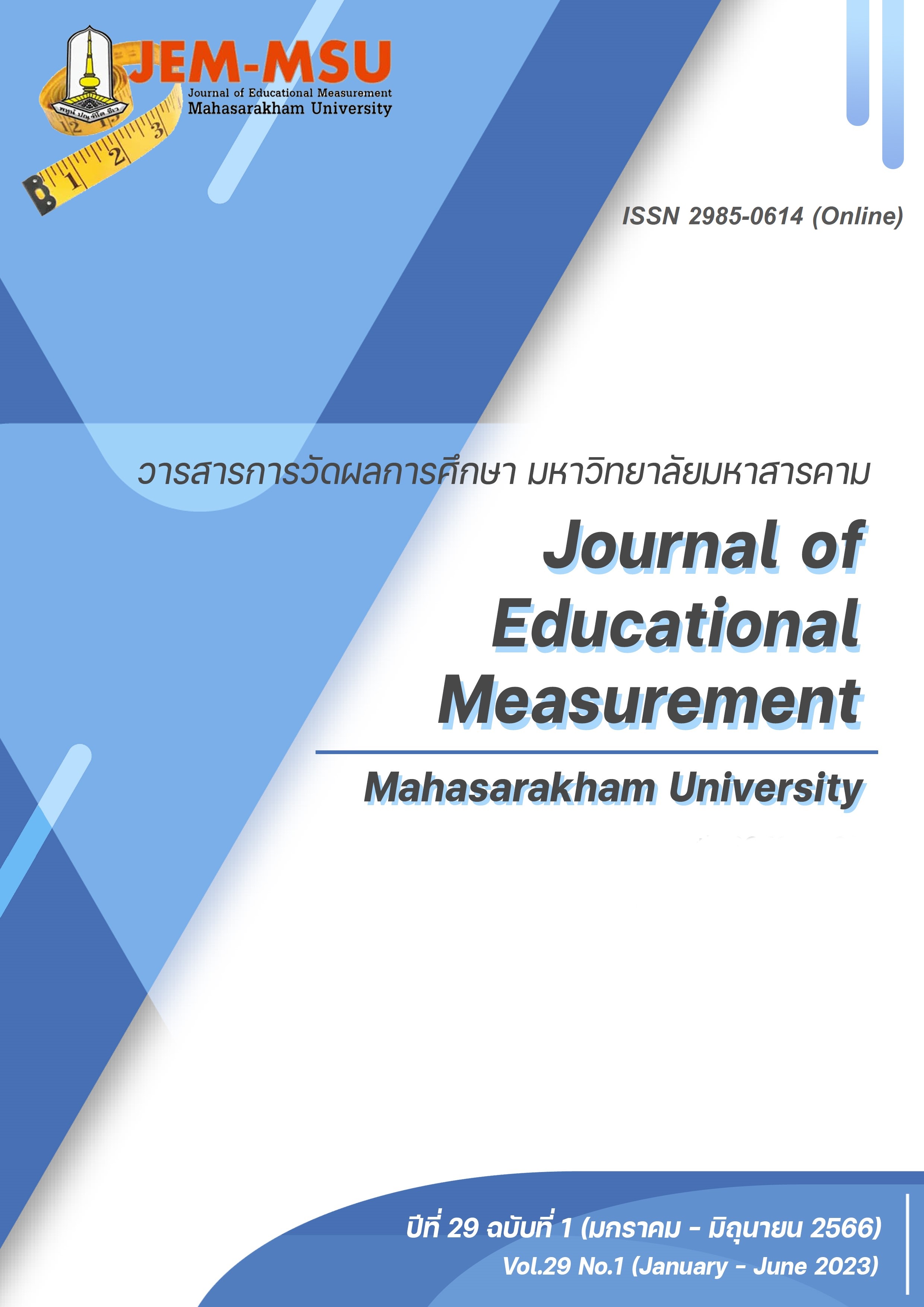Analysis of Educational Inequality Factors Affecting Mathematical Literacy under the International Student Assessment Program (PISA)
Main Article Content
Abstract
The purpose of this research was to analyze factors affecting mathematical literacy. Based on data from the 2018 International Student Assessment Program (PISA), the data used in this research were secondary data in the database of the PISA 2018 Assessment Project. The sample consisted of 8,662 students 15 years of age and were in grade 8 and 9 in 290 educational institutions. In the PISA 2018 Assessment Program, the data were analyzed with multilevel statistical analysis using HLM version 8.2.
The results showed that the factors affecting mathematical literacy, when the variables were grouped and linked to the PISA 2018 database, 2-level variables were summarized: (1) at the educational institution level, they were: the ratio of the number of students to teachers, classroom size, teacher shortage Index, government budget, learning resource index, teaching and learning materials, type of the educational institution and the size of the community where the educational institution was situated; (2) at the student level, they were: family socioeconomic status, family wealth index, and attitude in learning. From the multilevel analysis of factors that caused educational inequality, it was found that the school-level variables which had statistical significance effect at the .05 level were: classroom size with 21-25 students ( = 73.342), government budget (
= -0.747), student-teacher ratio (
= -1.791), type of private educational institutions (
= -40.087); the student-level variables with a statistical significance effect at the .01 level were: property in the home (
= 16.318), family wealth (
= -13.866), the highest education of parents at the post-secondary level before tertiary education (
= -15.934).
Article Details

This work is licensed under a Creative Commons Attribution-NonCommercial-NoDerivatives 4.0 International License.
The content and information contained in the published article in the Journal of Educational Measurement Mahasarakham University represent the opinions and responsibilities of the authors directly. The editorial board of the journal is not necessarily in agreement with or responsible for any of the content.
The articles, data, content, images, etc. that have been published in the Journal of Educational Measurement Mahasarakham University are copyrighted by the journal. If any individual or organization wishes to reproduce or perform any actions involving the entirety or any part of the content, they must obtain written permission from the Journal of Educational Measurement Mahasarakham University.
References
Farooq, M., Chaudhry, A., Shafiq, M., & Berhanu, G. (2011). Factors affecting students’ quality of academic performance: a case of secondary school level. Journal of Quality and Technology Management, 7(2), 1-14.
Ferreira, F. H. G., & Gignoux, J. (2011). The Measurement of Educational Inequality: Achievement and Opportunity. IZA Discussion Papers, 6161. https://docs.iza.org/dp6161.pdf
Mueller, S. (2011). Teacher experience and the class size effect - experimental evidence. IWQW Discussion Papers, 2011(7).
OECD. (2012). Equity and Quality in Education: Supporting Disadvantaged Students and Schools. OECD Publishing.
OECD. (2019). PISA 2018 Results (Volume III): What School Life Means for Students’ Lives, PISA. OECD Publishing.
Chamamporn, C., Sriharun, B., & Boutngern, C. (2014). Multi-level factors affecting the effectiveness of primary schools under office of the basic education commission. Valayalongkorn Research and Development Journal, 9(1), 166-175. (In Thai)
Chinjunthuk, S., & Junpeng, P. (2020). Assessment Guidelines for Student’s Personalized Mathematical Proficiency Development. Journal of Educational Measurement Mahasarakham University, 26(1), 47- 64. (in Thai)
Daduang A. (2018). Approaches for budget allocation improvement affecting studentquality of schools under the secondary educational service area office 1. An Online Journal of Education OJED, 13(4), 80-93. (In Thai)
Institute for the promotion of technology science and technology: (IPST). (2021). PISA Assessment Results 2018 Reading, Mathematics and Science. Institute for the promotion of technology science and technology. (In Thai)
Kittikajorn, P. (2012). “Overhauling Thai Education to Reduce Inequality” Paper presented at the meeting: Educational inequality. Graduate Business University. (In Thai)
Malakhonburi, C. (2017). The Improvement of Classroom Efficiency: A Comparison between Large, Middle and Small Classroom in College of Politics and Governance, Mahasarakham University. Journal of Politics and Governance, 7(3), 198-210. (In Thai)
Ministry of Education. (2017). Indicators and subjects of learning the core Learning group Mathematics according to the basic education core curriculum (Revised version 2017). Agricultural Co-operative Federation of Thailand Limited. (In Thai)
Pharcharuen, W., Uthaphan, P., Koklang, K., & Phutchu, S. (2021). Educational disparities of thai citizens studying age with the online learning situation in the viral age covid-19. Pannapanithan Journal, 6(1), 1-14. (In Thai)
Ponjang, N., Tulmethakaan, M., & Ketchatturat, J. (2017). Quality education study of Mathematics at the elementary level in school under the office of Loei educational service area i: an application of value-added model. Graduate Journal Valaya Alongkorn Rajabhat University under the Royal Patronage, 11(Special Issue), 73-84. (In Thai)
Sukjaroen, N., & Yoonisil, W. (2014). Meta-Analysis and Meta-Synthesis. Journal of Humanities and Social Sciences Rajabhat Mahasarakham University, 8(3). (In Thai)
Tuksino, P. (2009). Assessment of Science Instructional Management in Basic Education Schools: An Application of a Value–added Model and Differential Item Functioning [Doctoral dissertation]. Chulalongkorn University. (In Thai)


